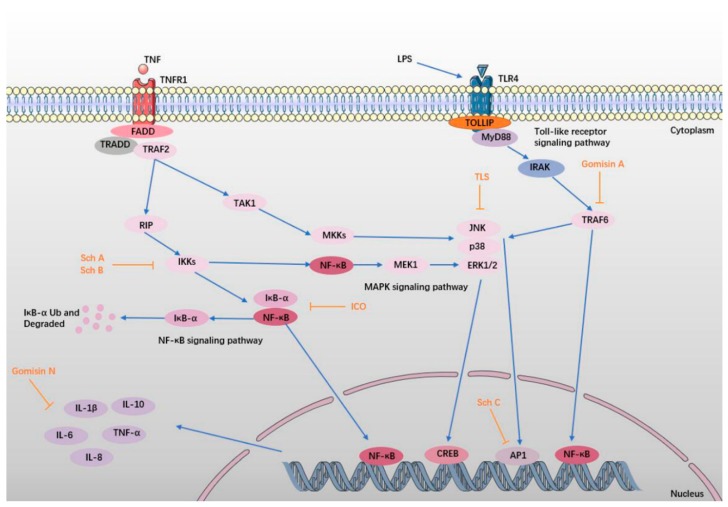Figure 4.
SCF and its active ingredients protect against inflammation in NDs. In the inflammatory response, TLR4 recognizes lipopolysaccharide (LPS), and then binds to the MyD88 Toll structure, forming a TLR-MyD active complex. Then, the complex recruits and activates the IL-1 receptor-associated kinase (IRAK), which is associated with tumor necrosis factor-associated factor 6 (TRAF6), activating the downstream mitogen-activated protein kinases (MAPK) pathway [101,102]. Meanwhile, TNFR1 binds to TNF, and interacts with receptor-interacting protein (RIP), activating the downstream inhibitory kappa B kinase (IKK) and MAPK pathway [103,104]. Phosphorylation of IκB protein leads to degradation of the protein, promotes nuclear translocation of nuclear factor-κB (NF-κB), and transfers NF-κB to the nucleus [105]. At the same time, the activation of the MAPK pathway leads to the production of activator protein-1 (AP-1), which is phosphorylated, and then enters the nucleus. Activation of NF-κB and AP-1 can lead to over-expression of the inflammatory factors, such as TNF-α, IL-1β, IL-6, IL-8, and IL-10, resulting a series of inflammatory reactions [106,107,108,109]. The protective effect of SCF and its active ingredients are shown in orange.

